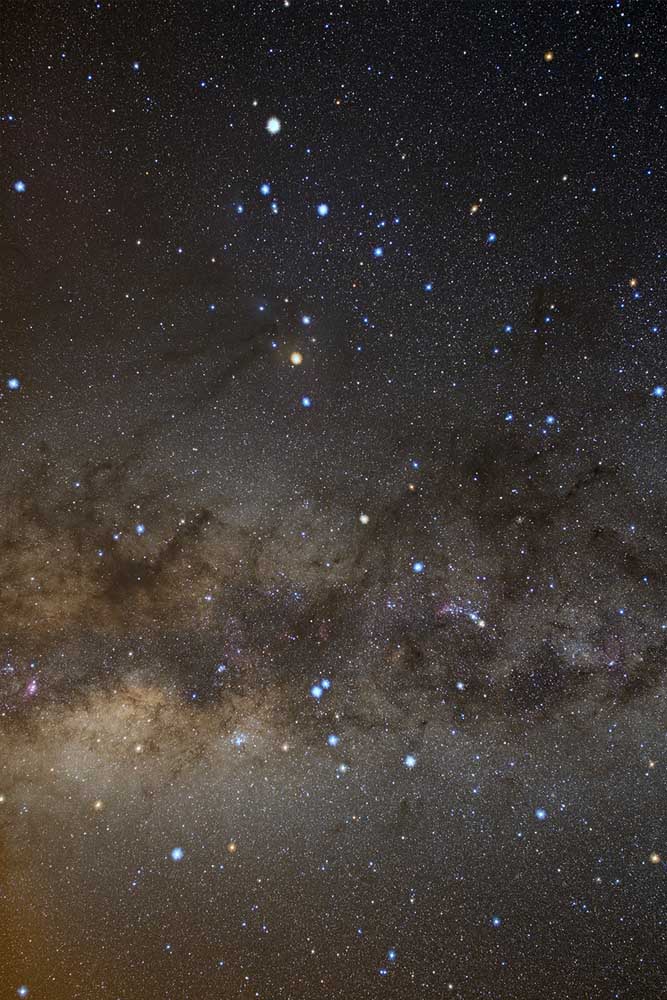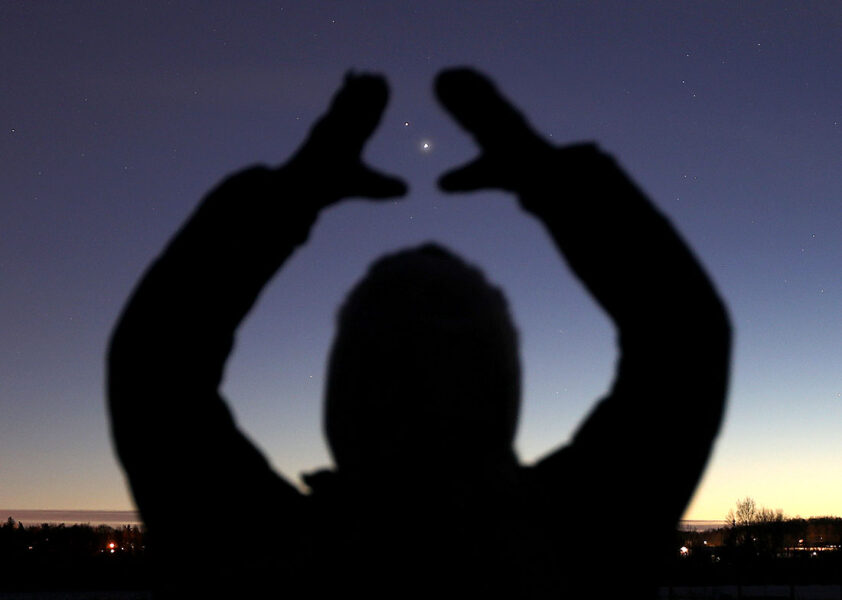
R. Stephens / Alson Wong / S&T Online Photo Gallery
Human beings have been mesmerized by the stars for thousands of years. The tradition of amateur astronomy endures as we hand down constellation stories from one generation to the next and share this yearning for discovery with new stargazers.
My introduction to stargazing wasn’t remarkable. It’s a common story of being shown the sky, first by a grandmother and later by a kind stranger who traced patterns in the stars with their fingers and relayed the tales attached to them. My grandmother showed me Orion, Taurus, and the Pleiades one wintry night while my cousins played behind her house. The stranger revealed Scorpius and its jewel, Antares, as he towed my family’s broken-down boat back to the dock. Each interaction lasted mere minutes but opened my eyes and mind to a lifetime of fascination.
My own attempts to share the universe with others, however, haven’t been so smooth.

Bob King
On Halloween 2020, we were sliding toward the Great Conjunction and I stood in my driveway, pointing up to show the neighbor children — in their own driveway for pandemic distancing — how to spot Jupiter and Saturn overhead. The older sister, about six years old, cheered.
“And what’s that?” asked her brother, all of four years old, as he pointed to the brightest light he could see.
“That,” I replied, trying to match his enthusiasm, “is a streetlamp.”
Thanks to COVID-19 and my imposter syndrome, it would be a while before I could try again.
About two months ago, we had a dinner guest — still a novelty after two years of the pandemic. My partner, M, was in the kitchen making his famous jambalaya, and Mark asked about the telescopes in the living room. He said he’d only once looked through one and couldn’t really see anything, so I set up a small 114mm dob outside and showed him the Pleiades.
“They look just like diamonds!” Mark exclaimed. Then I wowed him with a view of the Orion Nebula.
“Do you want to see another galaxy?” I asked.
“Do I want to see another galaxy?!” was his incredulous response. I turned the scope to the west and found M31, no more than a smudgy suggestion in the eyepiece. He gasped when he saw it.
I told him how far away that galaxy is, and about the coming collision between the Andromeda Galaxy and the Milky Way. I told him that when I look at Andromeda through a telescope or binoculars, I think about who might be looking back, and how that fills me with hope.
Mark’s eyes lit up, and I recognized that spark of wonder and joy. He waxed both philosophical and rhapsodic about the stars and the cosmos. He was full of questions, each spilling into the next. He wanted to know everything, starting with my stories of the people who first showed me the sky.
We talked about constellations and mythologies across world cultures. We talked about the collective unconscious and the scale of time. As dinner grew cold, we talked about how the stars belong to everyone.
Soon after, Mark started a new job in another city, one with easier access to dark skies. I don’t know if he now has his own binoculars or small telescope, or if he’s had a chance to step outside. He’s M’s friend, not mine, and we haven’t kept in touch.
But I hope he has looked up again. I hope someday he gives someone else a tour of his night sky favorites, and he tells the story about the first time he saw M31 through a telescope.
Being another link in a long chain of stargazers feels good and right. Across millennia, humans have looked up in awe and delight — and sometimes in fear and frustration. We’ve picked out patterns in the sky and passed down starlit legends.
I love this legacy. I have no children, but I have nieces and nephews. I have friends and neighbors, and acquaintances who come to dinner. It’s a privilege to open this door for others to peek through, so they too can marvel at a larger universe.
As long as I can steer clear of streetlamps.
 4
4









Comments
Rod
April 5, 2022 at 11:44 am
Very nice and thanks for sharing. I view from a more rural area in MD, no streetlights. Not dark sky though, stars about 5.5 or 5.6 magnitude can be seen, under clear skies and better viewing conditions. I use a 90-mm refractor telescope, 10-inch Newtonian on Dob mount, and 10x50 binoculars. 2-inch and 1.25-inch focuser and eyepieces. I periodically post observation reports at, https://skyandtelescope.org/astronomy-news/observing-news/this-weeks-sky-at-a-glance-april-1-9-2/, as weekly updates show up.
You must be logged in to post a comment.
Jen Willis
June 7, 2022 at 12:29 pm
Thanks, Rod!
You must be logged in to post a comment.
Joe
April 10, 2022 at 2:02 am
Great article. We can only view objects for the first time once, but we can relive that moment every time we show someone else that object for the first time. I love showing Saturn to novices, and watching their joy.
You must be logged in to post a comment.
Jen Willis
June 7, 2022 at 12:28 pm
Saturn was the first view I had through a big telescope at a local college when I was a kid. It took my breath away. Even through a much smaller backyard telescope, just the hint of those rings inspires wonder.
You must be logged in to post a comment.
You must be logged in to post a comment.